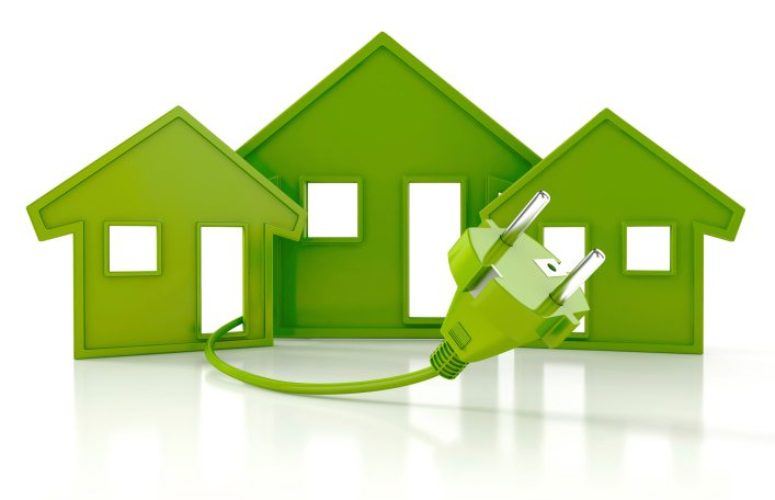
Going Green and Saving Green
A look at sustainable technologies and programs for small businesses that help improve energy efficiency.
By Anthony Bucci, Assistant Editor On Jun 6, 2016While small business owners in the Garden State continually look for ways to control and reduce operating costs to better run their businesses, one area that is often overlooked is energy efficient construction and upgrades. Newer technologies, along with state and federal incentives, make it easier than ever for small businesses to “go green” and reduce energy costs, thus shaving dollars off of business expenses.
In a recent survey conducted by Office Depot, approximately 51 percent of small businesses are looking to become “greener” this year, up from 34 percent that expressed interest in 2013. The increase is impressive, but many small businesses are still reluctant to jump on board with energy efficient initiatives.
“Most small businesses today are aware that going green is good for business and for the environment,” says Jason Chmura, associate for Princeton-based KSS Architects. “However, there is this perceived notion that becoming energy efficient costs more, which is why many businesses still haven’t taken any measures to become more efficient. The reality is that costs for newer green technologies have been declining. Add to the fact that New Jersey offers businesses great subsidies for energy efficient upgrades that can cover most – and in many cases – all costs.”
Through New Jersey’s Clean Energy Program (NJCEP), offered by the state’s Board of Public Utilities (BPU), small businesses can take advantage of the many offerings that aim to reduce out-of-pocket costs for energy efficient upgrades. The SmartStart program incentivizes energy-efficient retrofits, as well as new construction and rehab projects. NJCEP’s Pay for Performance program offers up to $2 million for new construction, rehab or retrofit projects that reduce energy consumption by 15 percent or more over current state building code requirements. The Direct Install program for “small- to mid-sized commercial and industrial facilities with less than 200 kW of peak electricity demand,” covers up to 70 percent of a project cost that includes energy efficient upgrades such as lighting, heating, cooling and ventilation (HVAC), and refrigeration.
“NJCEP’s mission is to promote, incentivize and achieve increased use of renewable sources of energy, energy-efficient products and other energy-saving technologies,” says Gary Finger, business energy ombudsman at the BPU. “Doing so helps to strengthen the economy, lower energy costs, reduce demand on the electric grid and improve the environment.”
Small businesses in the state can receive a free Energy Benchmark Study from the NJCEP that will help assess the energy performance of a company’s facility compared to similar buildings in that particular business or industry.
“This study will allow business owners to learn how their facilities’ energy use compares to similar businesses in the same category,” Finger says. “The business owner will receive a detailed report along with valuable information on implementing energy-efficient technologies, including available NJCEP financial incentives to lower project costs.
Finger says that advancements in the energy sector occur frequently and can impact programs offered by the BPU.
“When newer technologies with improved energy efficiencies – such as LED lights – initially hit the marketplace, they typically come with a higher cost,” he says. “In such cases, the BPU evaluates the technology to decide if program changes are necessary to incentivize implementation of the said technology.”
What types of products and technologies do small businesses have to choose from when looking to become more energy efficient and sustainable?
KSS’s Chmura says the first thing small business owners have to do is determine whether they will be constructing new buildings or facilities, or renovating and/or expanding pre-existing spaces.
“There is a big difference between a new building and the renovation of an existing building from both a sustainability standpoint and a financial standpoint,” he says. “Oftentimes, newer projects give us the option to take full advantage of energy efficiency. Once we decide if we are constructing a new building versus a renovation for our clients, then we can focus on the technology or the products that would make the most sense.”
Wayne Pfisterer, president of Hawthorne-based Pfister Energy, says that one way for small businesses to improve energy efficiency is to concentrate on building envelope improvements.
“Focusing on upgrading insulation and applying cool roof materials can go a long way in controlling building temperature, thus saving on energy costs,” he says. “New materials allow energy and heat from the sun to be reflected away from the roof, dissipating the heat before it enters the building and keeping the interior much cooler.”
HVAC equipment, which provides heating, cooling and ventilation, accounts for approximately 40 percent of electricity that is used in commercial buildings. However, upgrading HVAC systems can drastically improve efficiency.
“HVAC systems get more efficient each year,” Pfisterer says. “Installing highly-efficient rooftop units can quickly pay dividends in a short amount of time, depending on facility size and usage. Maintaining and repairing aging rooftop units and checking and repairing leaking ductwork also aids to avoid leaking and cooling loss. I see a lot of companies that let their HVAC decay without proper maintenance, and it ends up costing them much more in the long run than if they were to replace the units, thus saving them money.”
Chmura’s KSS Architects has been installing Variable Refrigerant Flow (VRF) HVAC systems in many of its client’s facilities. VRF systems are a relatively new technology that has two basic systems: air-cooled and water-cooled. A VRF system consists of an outdoor condensing unit and multiple indoor evaporators. The condenser and evaporators are connected by oil and refrigerant pipes, each with individual thermostat controls.
“The nice thing about VRF systems is you can have two or three offices and a conference room all controlled by one unit, and another two or three offices and conference room controlled by another unit,” Chmura says. “If you are strategic on where these units are placed, you can have a zoned control of your building. So, in the afternoon, one side of your building may need cooling, but the opposite side may need to be heated. What the system will do is take the excess heat from the one side and pump it over to the other side without burning any fuel, thus using minimal energy. You are able to take advantage of your own heat load that is being generated by the building itself.”
Smaller businesses also need to take advantage of new and more efficient ways to provide lighting to facilities and office spaces. Although not a “technology” per say, utilizing daylighting as part of the architecture of a new building or facility is a natural way to save money on energy costs and provides a better work environment for employees.
KSS Architects recently completed a renovation for Lawrenceville-based Womanspace, a non-profit agency that helps improve the lives of women and families affected by domestic abuse. The 6,000-square-foot, two-story building was equipped with large window walls at the front and rear facades, allowing natural light to fill the building.
However, perhaps the easiest and most cost effective way for small businesses to go green and become energy efficient is to focus on LED lighting.
“LED lighting is probably the best technology small businesses can implement that will help them save on energy costs,” says Ari Venezia-Zahemski, president and CEO of Madison-based Vanguard Energy Services. “On average, LED lighting can reduce energy use between 60 to 80 percent from the traditional fluorescent lighting. And those fluorescent tubes and fixtures have historically been the most-used product for any business. So, think about the potential savings, especially with a ROI of under a year with LED technology.”
Venezia-Zahemski says that in the early days of LED lighting, if a business wanted to adopt the technology, “they would have to replace an entire fixture,” which could cost upwards of $200 each. Today, the cheapest LED bulbs can cost a few dollars and it is “as easy as unscrewing an old fluorescent bulb and replacing it with a newer LED.”
Outdoor solar lighting is also another option small businesses have when looking to light pathways, parking lots or building exteriors, which can help cut down on energy usage versus “on-the-grid” lighting.
“Outdoor solar lighting is a good way to go, especially if a new facility is being built,” Pfister Energy’s Pfisterer says. “Wires don’t have to be run underground to feed power to the lights because they basically run off the sun. So there is a fairly good ROI with them.”
Taking lighting one step further is the next generation of lighting sensors and controls. Gone are the days of leaving lights on in unoccupied rooms and forgetting to turn them off at the end of the day, thus wasting energy.
“The great thing about lighting sensors today is that they can be programmed to dim and/or turn off if the room you are in has enough light from other sources, such as sunlight,” Venezia-Zahemski says. “You can also control your businesses’ lights from your home, from the beach or from the other side of the world via Internet-enabled devices such as a computer, tablet or smartphone.”
Next generation controls are also available for heating and cooling units and some systems can even control the power coming from electrical wall outlets.
“If there is a piece of equipment or an electronic [device] that is powered on and plugged into the wall, for instance, a business owner can see that and turn it off even when they are not in the building,” Venezia-Zahemski says. “So, the options that business owners have in terms of monitoring their energy usage and becoming energy efficient are plentiful and are only going to increase as technology further advances.”
“Technology is constantly changing and improving,” concludes KSS Architect’s Chmura. “And in this industry, technology is the key to constructing sustainable buildings and helping businesses become more energy efficient. Everyone involved in this industry – whether it is a firm like ours, or a state like New Jersey – is committed to creating a better environment while helping businesses reduce energy costs. But at the end of the day, it’s the small businesses that need to recognize that there are options out there available to them at minimal to no cost. There is no better time to ‘go green’ than now.”
Related Articles:






